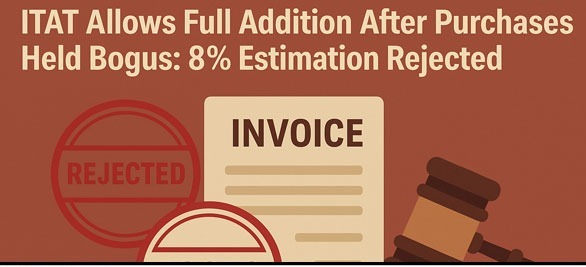Mr. Justice Prodyot Kumar Banerjee
1. This Rule is directed against an order passed on an application u/s 5 of the Calcutta Thika Tenancy Act as well as the appellate order affirming the said order. The opposite party filed an application u/s 5 of the Calcutta Thika Tenancy Act before the Controller for eviction of the petitioner herein who is a thika tenant in respect of a land measuring 2 kottah and odd comprising holding No.183/3, Sri Ram Dhang Road on the ground that the said land is required for his own use and occupation by building a house thereon. The opposite party determined the petitioner''s tenancy by notice dated 10th September, 1965 but as the petitioner did not comply with it, the application u/s 5 of the Act was filed for eviction. The defence of the petitioner, thika tenant was that the notice was not served and the respondent did not require the land for the own use and occupation. It is further stated by way of defence that the thika tenant-petitioner had constructed a pucca structure on the land long ago and as such was entitled to the protection from eviction under the Thika Tenancy Act as amended in 1969. Both the tribunals having held against the petitioner thika-tenant, the petitioner moved this Court under Art. 227 of the Constitution and obtained the present rule.
2. Before I consider the arguments advanced, it is convenient for me to refer to section 3 of the Calcutta Thika Tenancy Act as it stood before the amendment in 1969:
Section 3.
Grounds on which a Thika tenant may be ejected: -
Notwithstanding anything contained in any other law for the time being in force or in any contract, a thika tenant shall, subject to the provision of this Act, be liable to ejectment from his holding on one or more of the following grounds and not otherwise namely: -
(i) on the ground that he has failed to pay an arrear of rent due to the landlord in respect of the holding:
Provided that no tenant paying rent at intervals of a month or less shall be evicted unless he has made at least three successive defaults in such payment;
(ii) on the ground that he has used the land comprised in his holding in a manner which renders it unfit for any of the purposes mentioned in clause (5) of section 2 or that he has broken a condition consistent with this Act on breach of which he is, under the terms of a contract between himself and his landlord, liable to be ejected;
(iii) on the ground that he has refused to agree to pay rent at such enhanced rate as may be determined u/s 25;
(iv) except during the period limited by registered lease under which a thika tenant may hold the land comprised in the holding, on the ground that the land is required by the landlord for his own occupation or for the purpose of building on the land or otherwise developing the land by discontinuing letting to thika tenants;
(v) on the ground that he has failed himself to use of occupy a major part of the holding for his own residential, manufacturing or business purpose for more than six consecutive months;
Provided that in such a case the thika tenant may continue to be in possession of that part of the structure and land, which he himself uses or occupies and shall in respect of such part be deemed to be a tenant within the meaning of the West Bengal Premises Rent Control (Temporary Provision) Act, 1950 (West Beg. Act XVII of 1950), holding under the landlord;
(vi) when he holds the land comprised in the holding under a registered lease, on the ground that the term of the lease has expired.
After the amendment in 1969, that is, West Bengal Act XXIX of 1969 of which section 3 stands as follows: -
3 (1). Notwithstanding anything contained in any other law for the time being in force or in any contract, a thika tenant shall, subject to the other provisions of this Act, be liable to ejectment from his holding on one or more of the following grounds and not otherwise, namely: -
(i) on the ground that he has used the land comprised in his holding in a manner which renders it unfit for any of the purposes mentioned in clause (5) of section 2;
(ii) except during any period limited by a registered lease under which a thika tenant may hold the land comprised in the holding and subject to the provisions of sub-section (2), (3) and (4), on the ground that the land is required by the landlord for his own occupation;
(iii) when he holds the land comprised in the holding under a registered lease for a purpose other than a residential purpose, on the ground that the term of the lease has expired.
(2) No landlord shall be deemed to require the land comprised in the Thika tenant''s holding for his own occupation if he has a house of his own in the city in which such land is situated and the accommodation available in such house is, in the opinion of the Controller, reasonably sufficient for him and his family.
(3) Where the landlord requires the land comprised in the thika tenant''s holding for his own occupation and the Controller is of opinion that such requirement may be substantially satisfied by ejecting the thika tenant from a part only of his holding and allowing him to continue in occupation of the rest, then, if the thika tenant agrees to such occupation, the Controller shall make an order accordingly and fix the proportionate rent for the portion remaining in the occupation of the thika tenant.
(4) Where the thika tenant has erected or acquired a pucca structure for a residential purpose on the land comprised in his holding, no order for ejectment shall be made against him except in respect of such part, if any, of such land as does not appertain to the pucca structure". Mr. Pyne on behalf of the petitioner contended that after the amendment of section 3, in particular, sub-section (4) of section 3, as there is a pucca structure on the land which is being used for residential purpose by the thika tenant, the petitioner cannot be evicted from the land in question. It is argued by Mr. Pyne that no order for eviction can be made on any ground other than those contained in section 3. Section 3(1)(ii) is further subject to the provision of sub-sections (2), (3) and (4) of section 3 and sub-section (4) provides that where the thika tenant has erected or acquired a pucca structure for a residential purpose on the land comprised in his holding, no order for ejectment shall be made against him.
3. Mr. Gopal Mukherjee on behalf of the opposite party landlord contended that the pucca structure was erected after the Calcutta Thika Tenancy Act as amended in 1969 came into force and as such the petitioner is not entitled to protection at all.
4. Both the Courts held that the structure was erected after the amendment of 1969.
5. Mr. Pyne, however, contended that whether the structure is erected before or after the amendment of the Calcutta Thika Tenancy Act (Second Amendment) 1969 is of no concern and as soon as it is found that there is a pucca structure on the land the Court cannot make an order of ejectment as it is not covered within the grounds of ejectment contained in section 3 of the Thika Tenancy Act. Section 3 of the Calcutta Thika Tenancy Act was substituted with a new section of the Calcutta Thika Tenancy (Second Amendment) Act, 1969. In the said Act, sub-section (4) of section 3 protects the rights of the thika tenant who has erected or acquired a pucca structure for residential purposes from an order of ejectment. In the present case both the Courts held that the structure was erected unauthorizedly after the amendment came into force. It has been further enacted in the Calcutta Thika Tenancy (Second Amendment) Act, 1969 by insertion of section 10A that the thika tenant may erect pucca structure with previous permission of the Controller. It further appears from the Object and Reasons contained in the Bill for amendment of the Calcutta Thika Tenancy Act of 1949 that by the said amendment the thika tenant using the land for residential purposes, was sought to be given the right to erect pucca structure. The statement of the Object and Reasons are in the following terms: -
It has been considered necessary that by further amendment of the Calcutta Thika Tenancy Act, 1949, the legitimate interests of a thika tenant should be properly safeguarded, the grounds on which a thika tenant can be ejected should be further restricted and that a thika tenant using the land for residential purpose should be given the right to erect pucca structure. It is also essential to ensure that the thika tenant discharges his obligations to the Bharatias by keeping the huts fit for habitation and by providing essential amenities like water supply, conservancy and sanitary services.
From the reading of these provisions it appears to me that the thika tenant who has erected or acquired pucca-structure for residential purpose is protected but if the said structure is unauthorised as in the present case, he cannot be protected under the provisions of the Calcutta Thika Tenancy Act as amended by the Calcutta Thika Tenancy (Second Amendment) Act, 1969. It will further appear that the said Act sought to give right to the thika tenant who had no such right to erect pucca structure before coming into force of the second amendment of 1969, but in order to do so the permission of the Thika Controller is necessary. In that view of the matter, in my opinion, the Court below were right in holding that the petitioner thika tenant is not protected from an order of eviction.
6. Mr. Pyne referred to the cases reported in
7. Mr. Justice Banerjee in the case reported in
8. In my opinion, therefore, the petition must fail and the Rule must stand discharged. There will be no order as to costs.

